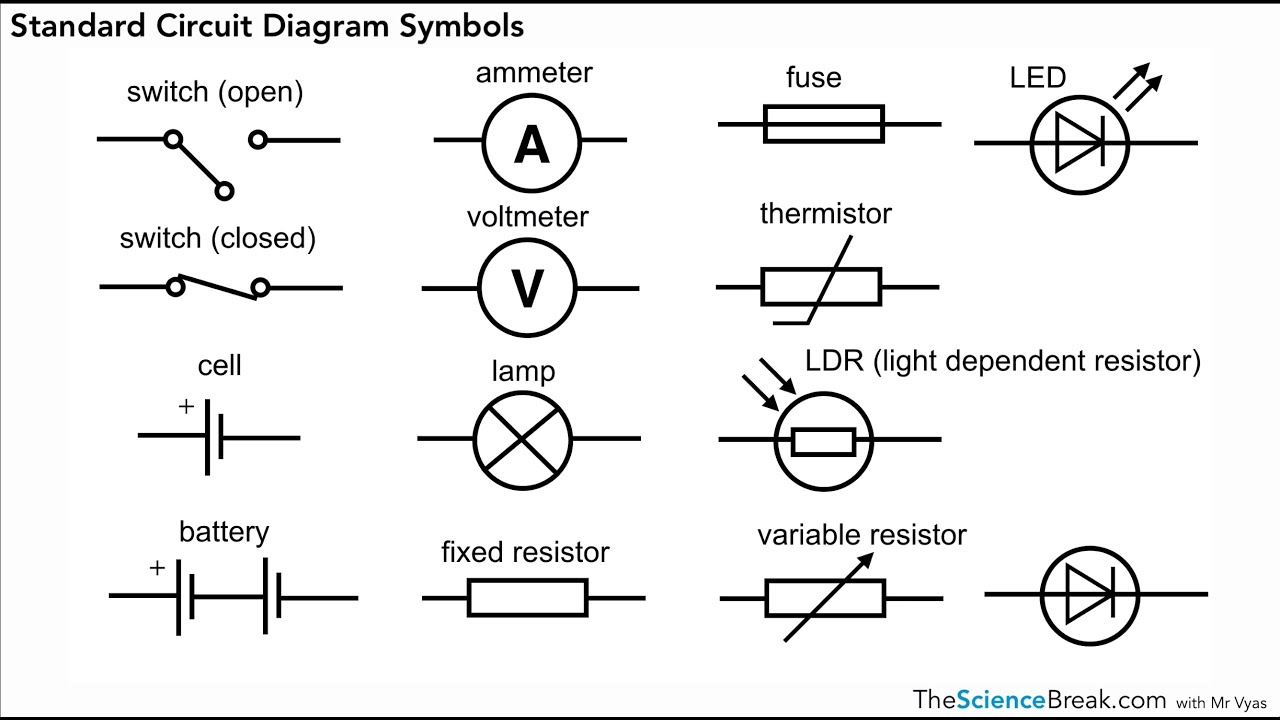-
Consists of converting electrical potential energy into other useful types of energy
-
3 parts to a circuit (minimum)
- Source of potential energy
- Battery
- Electrical cells
- Power points
- Wires
- Device/Component/Resistor
- Source of potential energy
-
Current: conventional current, i.e. flow of positive charge
-
Electron current refers to flow of electrons
Circuit Diagrams

- Ammeter: measures current (I), unit ampere (A)
- Voltmeter: measures potential difference (pd)
- Voltage (V)
- e.m.f., electromotive force
- Measured in volts (V)
- Galvanometer: a very sensitive ammeter
Why do electrons move in a circuit?
- Electrical potential energy: results from a separation of charge, i.e. potential difference i.e. voltage i.e. e.m.f.
- V = voltage/pd/emf measured in volts (V)
- W = () = work done on charges (J)
- q = charge (C)
Current
- Current: rate of flow of charge, a.k.a. flow of electrons
- I = current in amperes (A)
- q = charge (C)
- t = time elapsed (s)
Series Circuits
- When components in a circuit are connected in the same path, they are said t be in series
- When components are connected in different branches of a circuit, they are said to be in parallel
- Ammeters must be connected in series
- Voltmeters must be connected in parallel
Things we should have noticed in practical
Series
- For a single component in series with emf, current was the same in every part of the circuit
- If more components are added in series, the current is the same in every part of the circuit, but less than before
- The voltage for a single component, V ~ emf
- If more components are added, their individual Voltage < emf (decreases), but sum of voltage = total voltage
Parallel
- For components in parallel, the current is divided between them
- Voltage is the same in each branch
Ohm’s Law
- Resistance: measure of the difficulty with which charge flows in a medium
-
- V: voltage (in volts)
- I: current (in amps)
- R: resistance (in ohms)